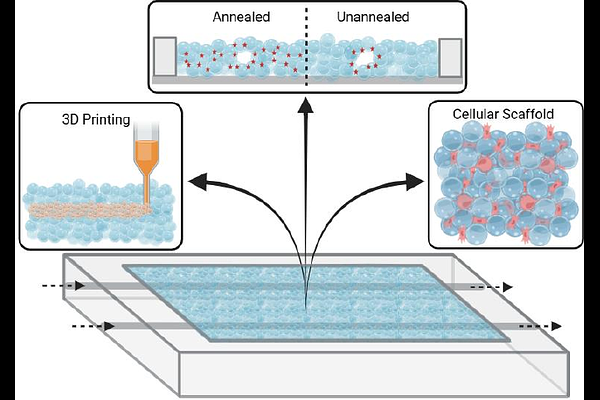Integrating Microchannels and Flows into 3D Printable Granular Hydrogel Matrices

Integrating Microchannels and Flows into 3D Printable Granular Hydrogel Matrices
Ferrarese, E.; Swanekamp, E.; Bui, T.-v.; Highley, C. B.
AbstractMicrofluidic systems incorporating or contained within hydrogels are important in creating microphysiological systems (MPSs). Often naturally derived hydrogels are used, as their inherent bioactivity supports dynamic cellular behaviors. Hydrogel biomaterials that are partly or fully synthetic are desirable in engineering systems with specific, designed properties, though they typically lack bioactive features of natural materials without additional molecular design. In particular, permissive biomaterials enable physiologically relevant dynamic cellular behaviors. Granular hydrogels offer inherent permissiveness, owning to porosity between particles and dynamic behaviors in the absence of interparticle crosslinking. However, applying these in MPS to model tissues requires stable channels to perfuse fluid in these dynamic systems. Here, we establish channels within granular hydrogels to enable perfusion through spatially controlled interparticle crosslinking. Selective crosslinking allowed for the formation of stable channels while allowing the microparticles of a granular hydrogel between two channels to remained uncrosslinked. This allowed spatiotemporal control of signals within an environment established from microparticles without interparticle crosslinking. Fluorescently tagged molecules allowed for the visualization of controlled soluble gradients between two channels within the device. Additionally, embedded 3D printing processes can be used to specify material composition within the system, demonstrating integrated technology for engineering well-defined hydrogel systems. Integrated microfluidic-based control over soluble signals in a system that is compatible with 3D printing processes will establish a basis for building MPSs for broad applications, and the ability to maintain granular systems in culture without interparticle crosslinking will enable design of synthetic hydrogels that access unique dynamic properties within these systems.